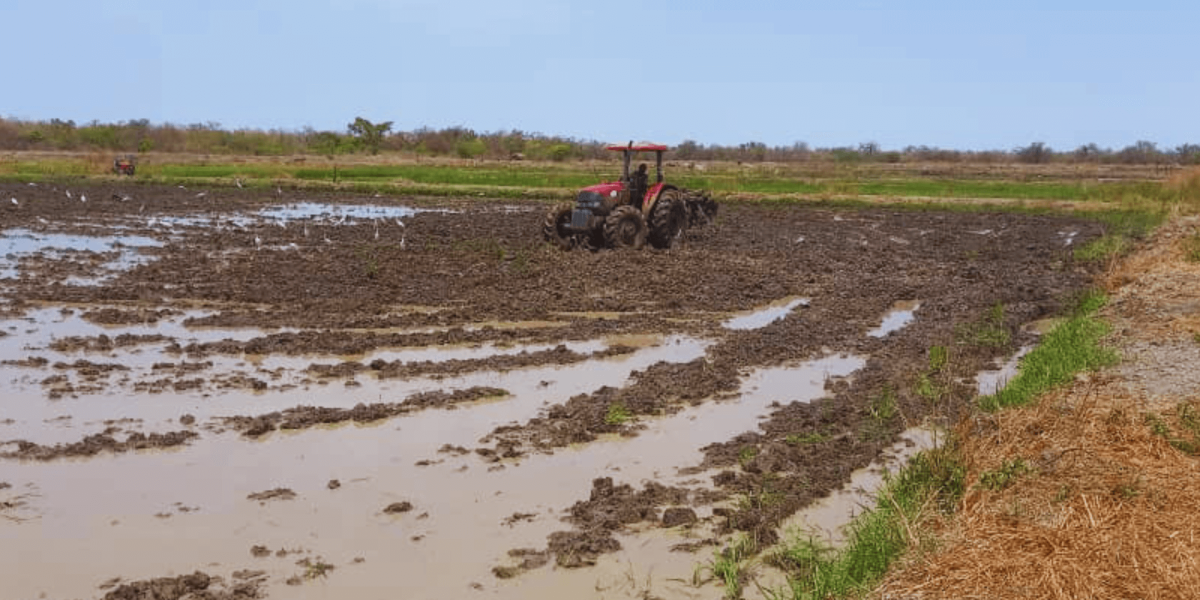Climate change poses a significant threat to agriculture worldwide, and The Gambia is no exception. As one of the most vulnerable countries to climate change due to its geographical location, The Gambia faces numerous challenges that impact its agricultural sector. Rising temperatures, unpredictable rainfall, and extreme weather events are disrupting traditional farming practices, threatening food security, and affecting the livelihoods of smallholder farmers. This blog explores the impact of climate change on agricultural projects in The Gambia, with a focus on the initiatives aimed at mitigating these effects and promoting resilience.
Climate Change and Its Effects on Agriculture
Climate change in The Gambia manifests in various ways, all of which have detrimental effects on agriculture:
- Rising Temperatures
- Increased temperatures can lead to heat stress on crops and livestock, reducing yields and productivity. Certain crops may no longer be viable in some regions due to higher temperatures.
- Unpredictable Rainfall
- Irregular rainfall patterns make it difficult for farmers to plan and manage their planting and harvesting schedules. This unpredictability can lead to crop failure and lower agricultural outputs.
- Extreme Weather Events
- The frequency and intensity of extreme weather events such as droughts, floods, and storms have increased. These events can destroy crops, erode soil, and damage infrastructure, leading to significant economic losses.
- Saltwater Intrusion
- Rising sea levels and reduced rainfall have increased saltwater intrusion into lowland floodplains, affecting soil fertility and crop yields.
The ROOTS Project: Building Resilience
The Resilience of Organizations for Transformative Smallholder Agriculture Project (ROOTS) is at the forefront of addressing the challenges posed by climate change in The Gambia. Launched in 2021, ROOTS aims to improve food security, nutrition, and the resilience of smallholder farmers. Here are some key strategies employed by the ROOTS project to combat climate change:
- Climate-Smart Agriculture
- ROOTS promotes climate-smart agricultural practices that enhance productivity while reducing greenhouse gas emissions. Techniques such as crop rotation, agroforestry, and conservation tillage help improve soil health and water retention.
- Improved Water Management
- The project focuses on efficient water management practices, including the construction of irrigation systems and the use of drought-resistant crop varieties. These measures ensure that farmers have access to water even during dry spells.
- Training and Capacity Building
- ROOTS provides training programs for farmers on climate adaptation strategies. These programs educate farmers on the latest techniques and technologies for sustainable farming in a changing climate.
- Infrastructure Development
- By improving rural infrastructure, such as roads and storage facilities, ROOTS helps farmers reduce post-harvest losses and access markets more easily. This infrastructure is designed to withstand extreme weather conditions.
Other Notable Climate Adaptation Projects
In addition to ROOTS, several other projects in The Gambia are focused on mitigating the impact of climate change on agriculture:
- National Agricultural Land and Water Management Development Project (NEMA)
- NEMA focuses on land and water management to enhance agricultural productivity and resilience. The project includes soil conservation measures and the construction of climate-resilient infrastructure.
- Climate Change Adaptation Project
- This project aims to build the resilience of the agricultural sector by promoting climate-smart practices, improving water management, and providing farmers with climate information services.
- Gambia Commercial Agriculture and Value Chain Management Project (GCAV)
- GCAV supports farmers in adopting modern farming techniques and improving value chains for key commodities. The project includes measures to help farmers adapt to climate change.
Benefits of Climate Adaptation Projects
These climate adaptation projects offer numerous benefits to The Gambia’s agricultural sector:
- Increased Resilience
- By adopting climate-smart practices and improving infrastructure, farmers can better withstand the adverse effects of climate change.
- Improved Productivity
- Efficient water management and sustainable farming techniques lead to higher crop yields and improved food security.
- Economic Stability
- Access to markets and reduced post-harvest losses help farmers achieve better economic stability, reducing the vulnerability of rural communities.
- Sustainable Development
- These projects promote sustainable development by ensuring that agricultural practices are environmentally friendly and economically viable.
Conclusion
Climate change presents significant challenges to agriculture in The Gambia, but through innovative projects like ROOTS, the country is taking proactive steps to build resilience and ensure food security. By promoting climate-smart agriculture, improving water management, and enhancing infrastructure, The Gambia is working to mitigate the impacts of climate change on its agricultural sector. As these efforts continue, the future of agriculture in The Gambia looks promising, with the potential for increased productivity, economic stability, and sustainable development.


